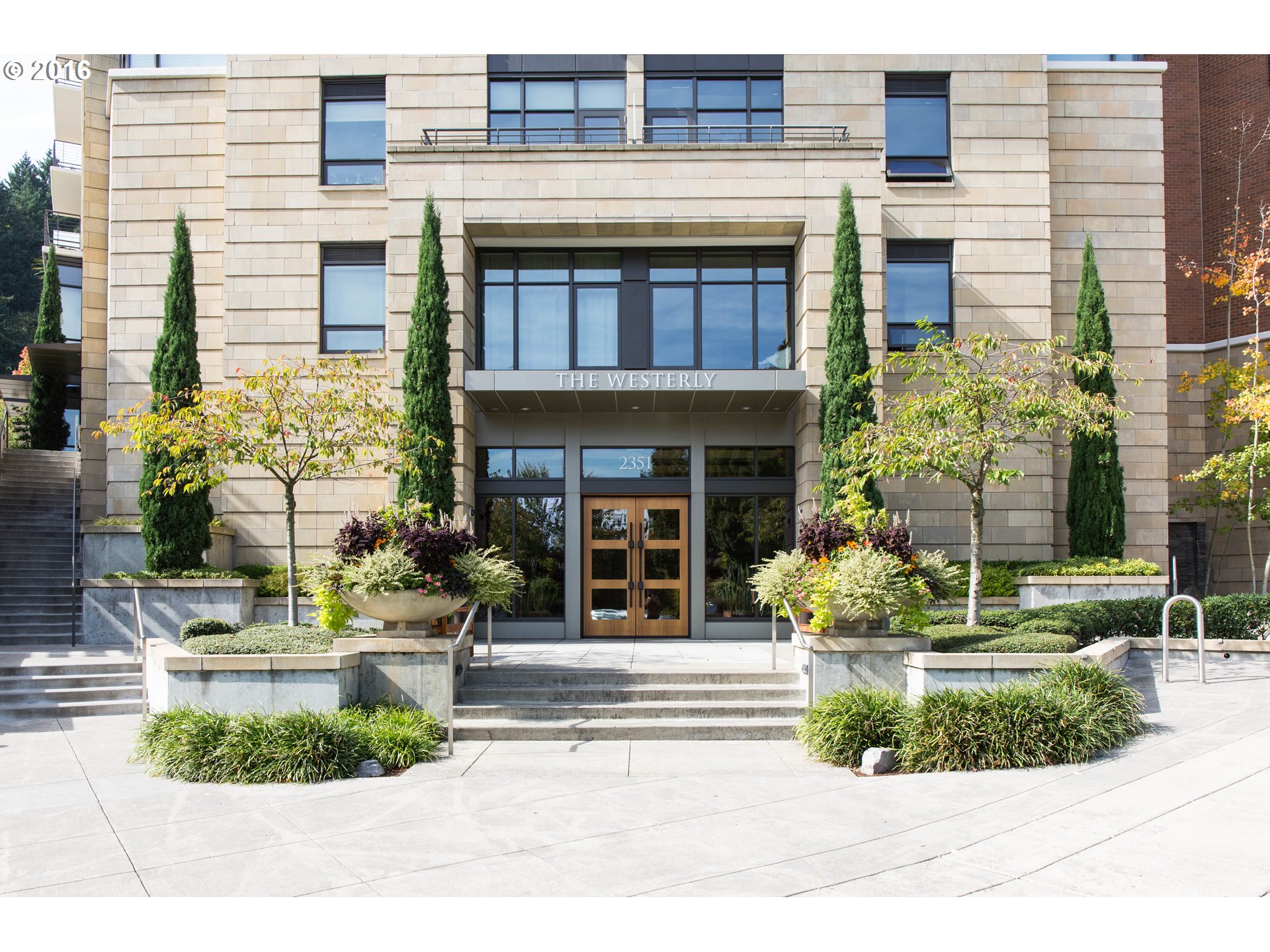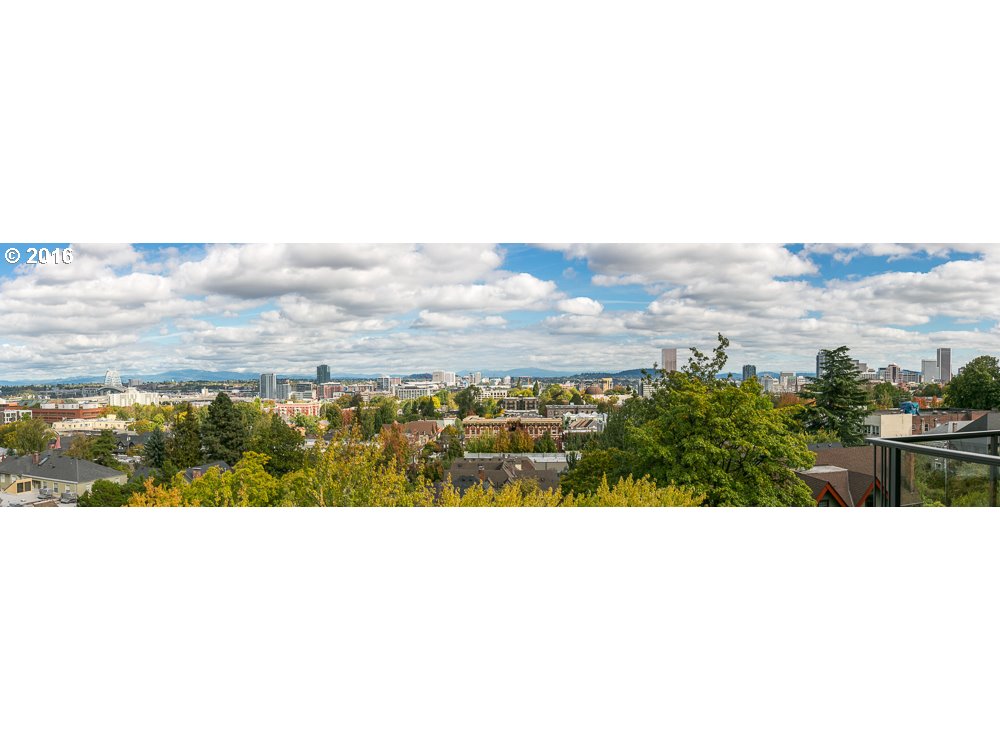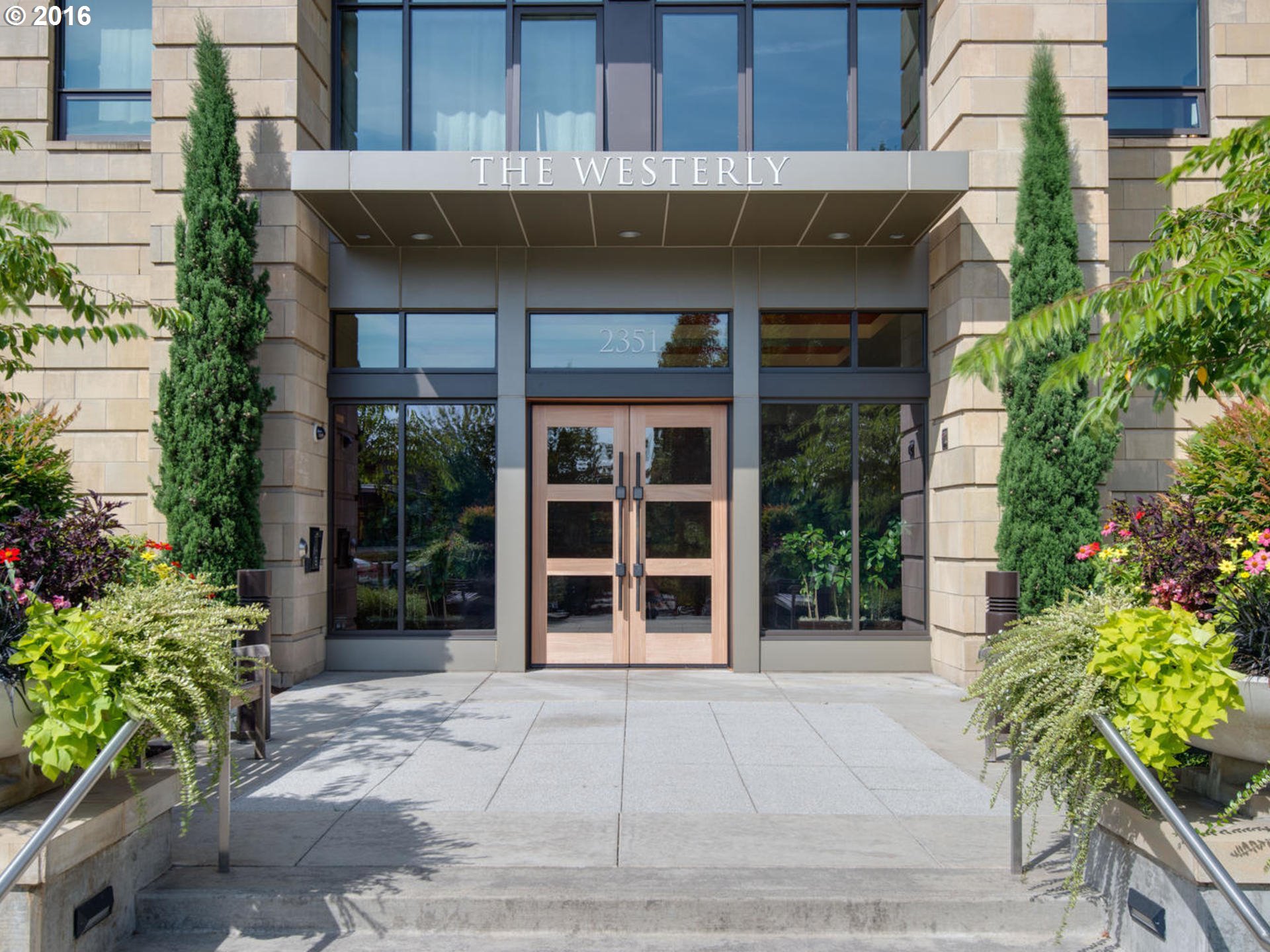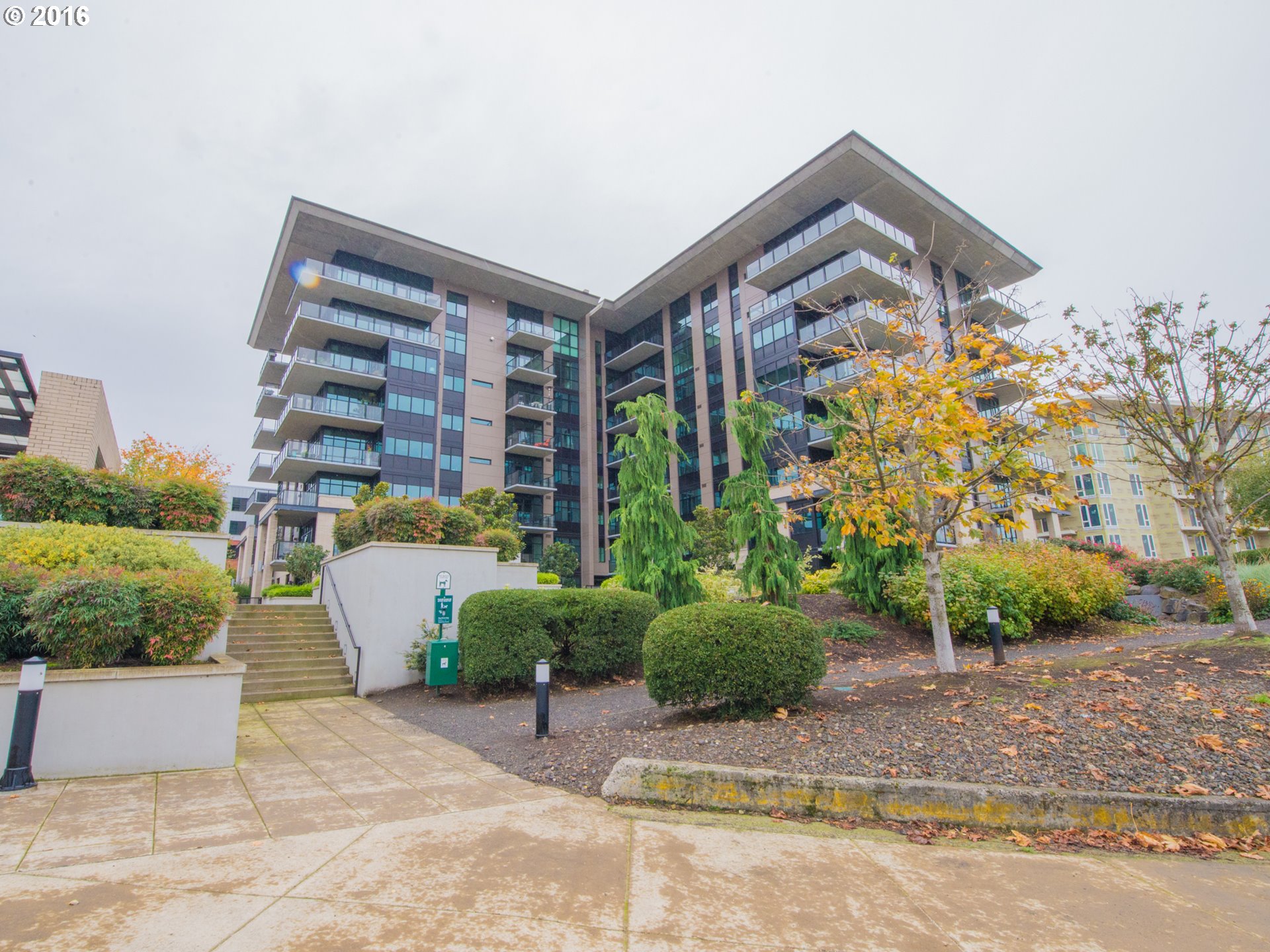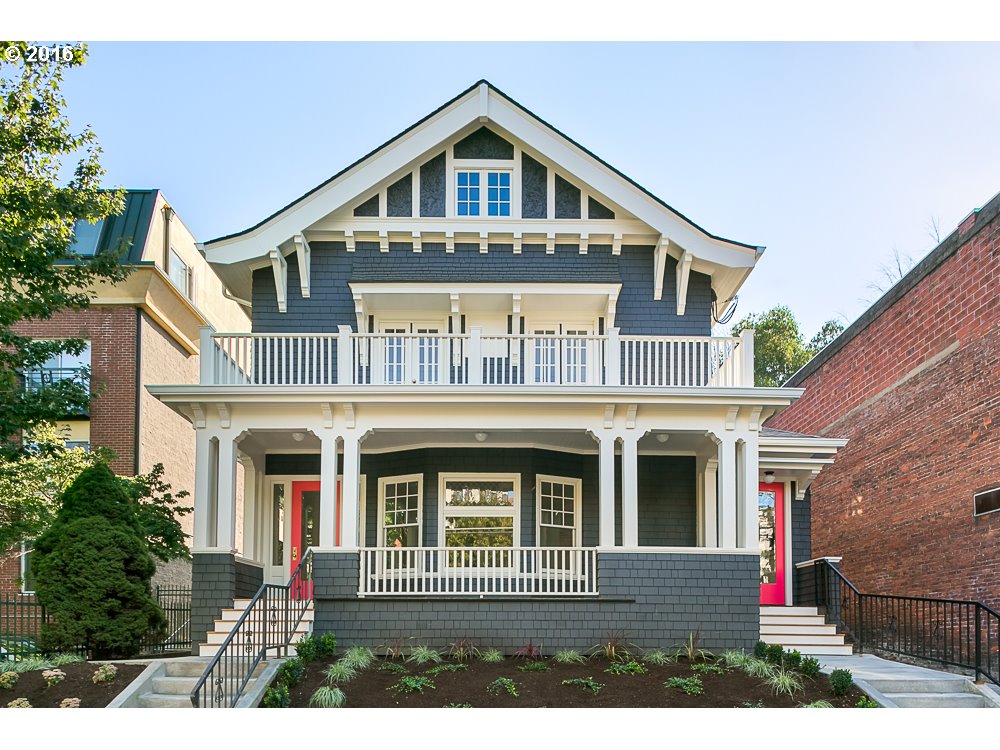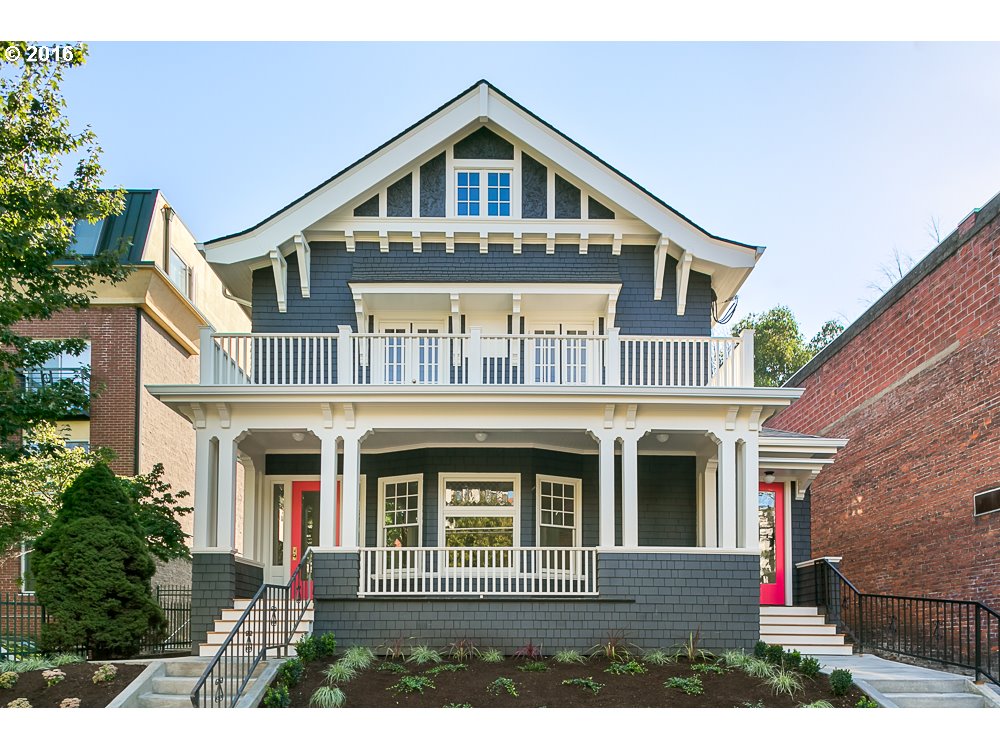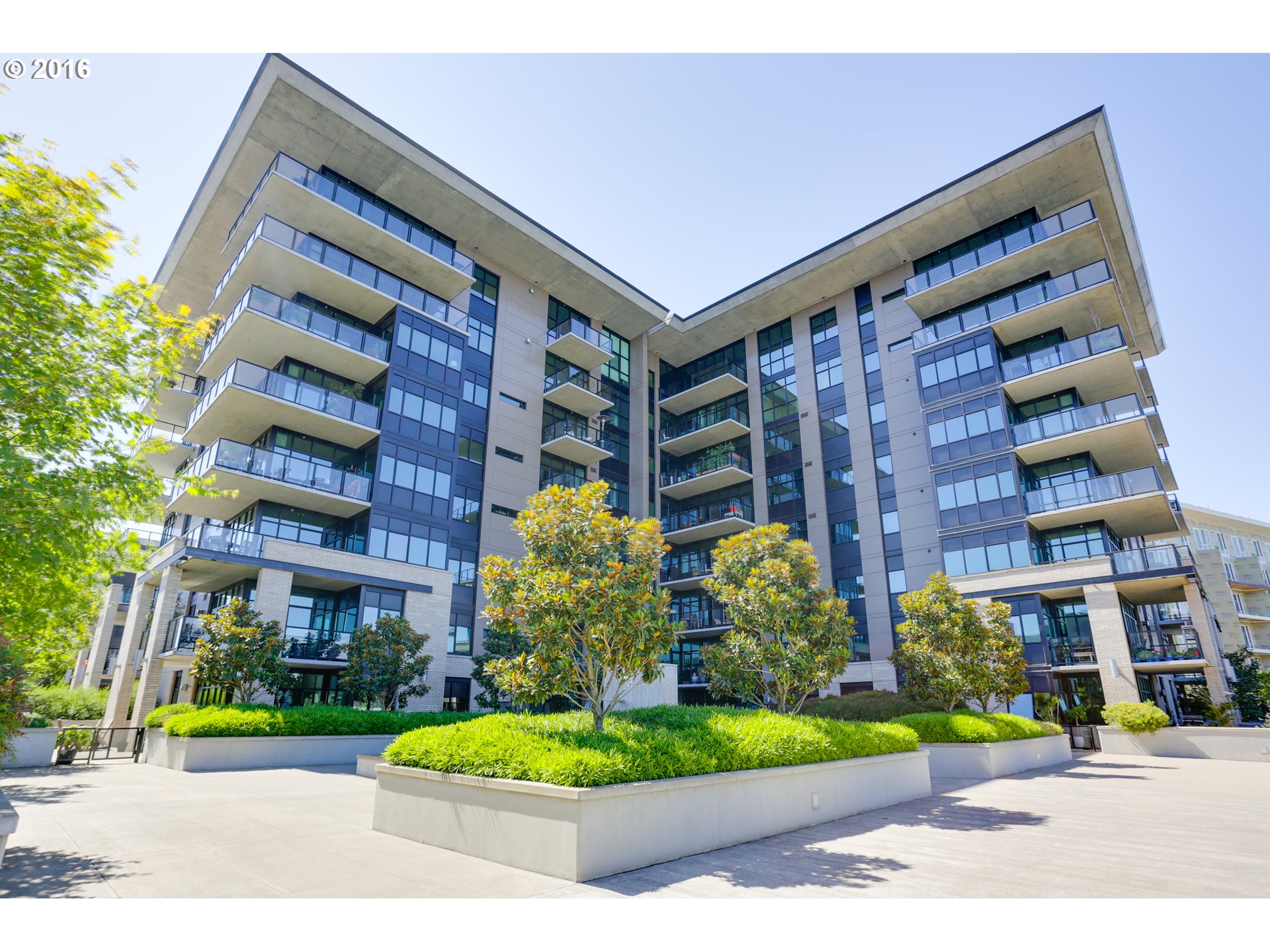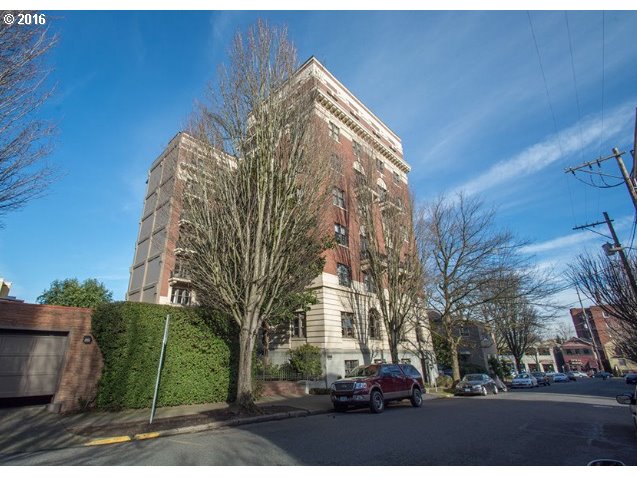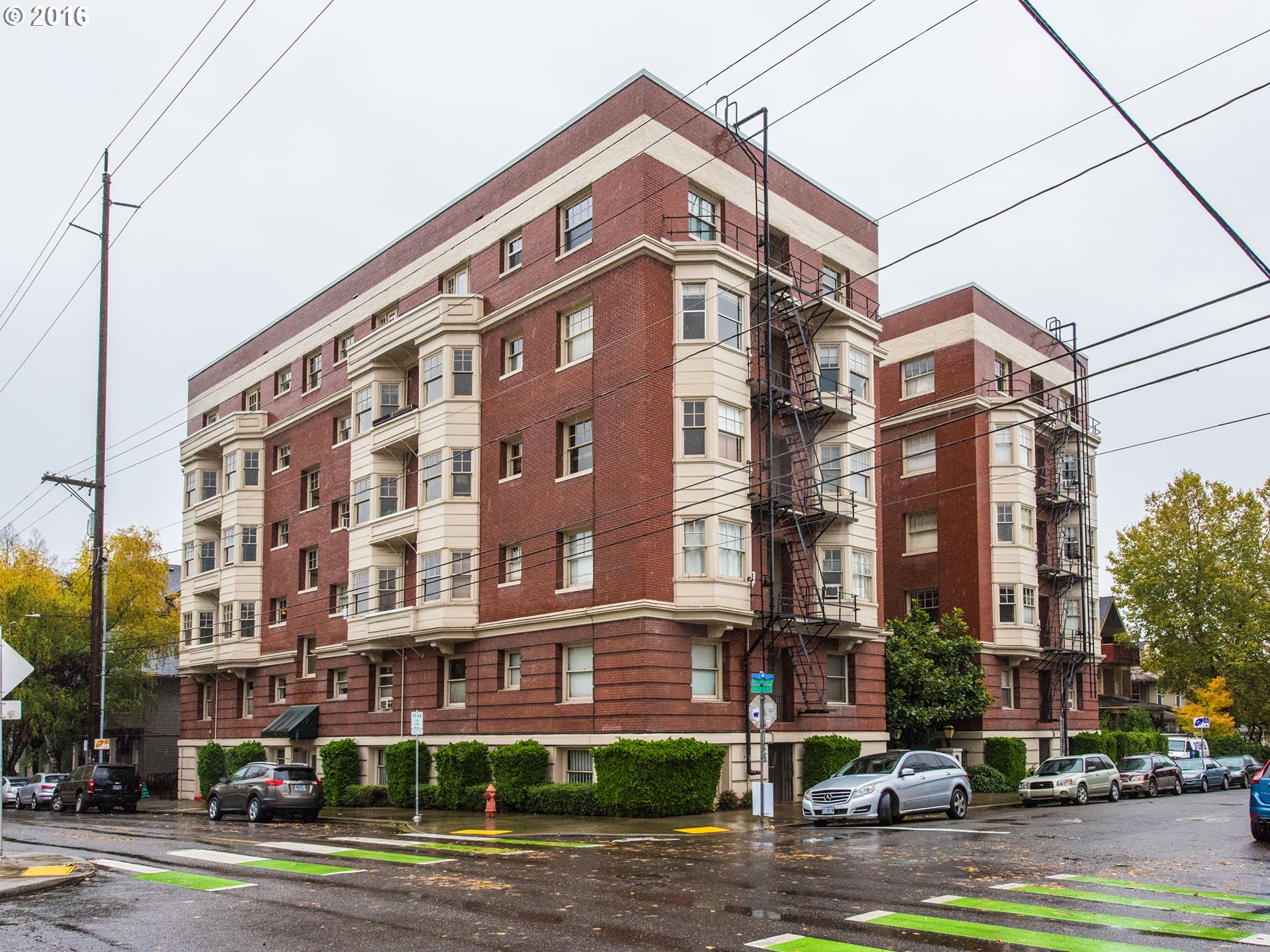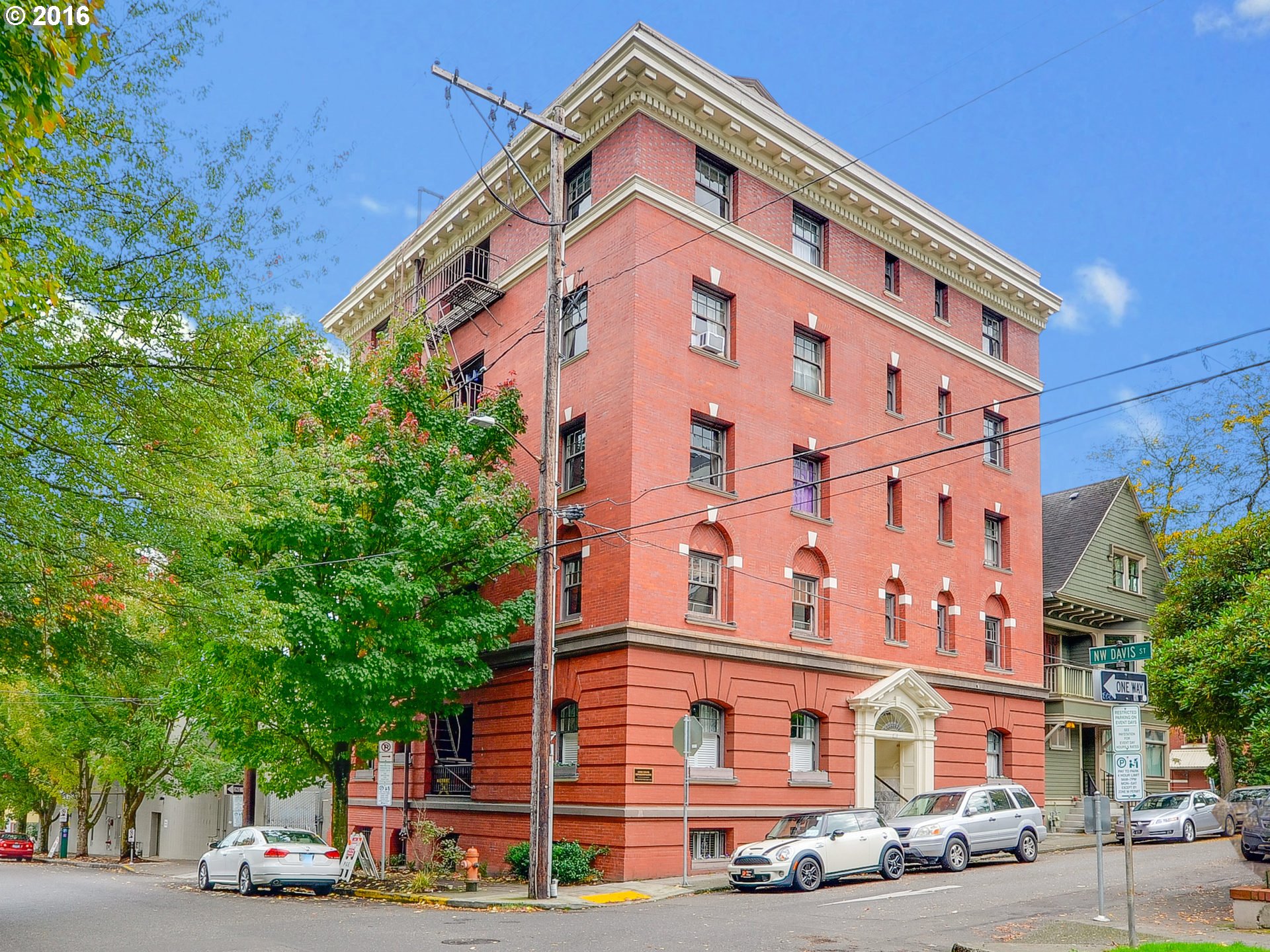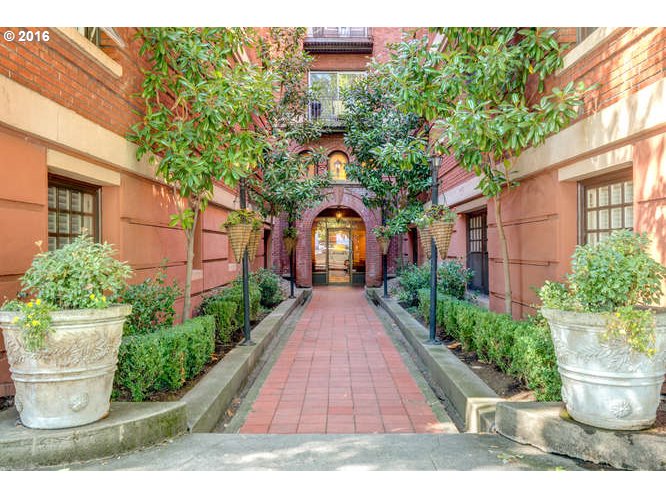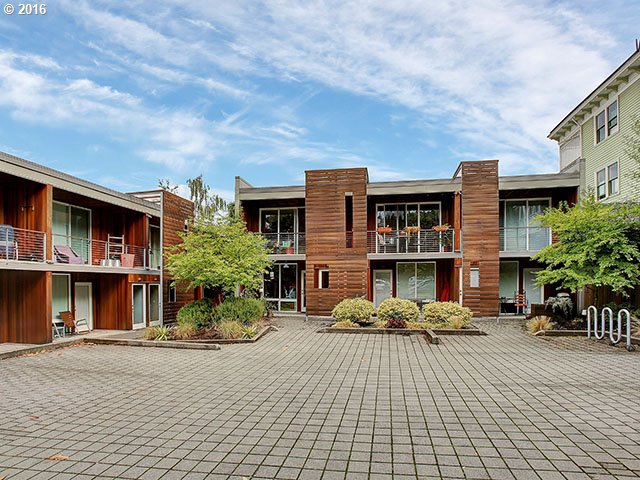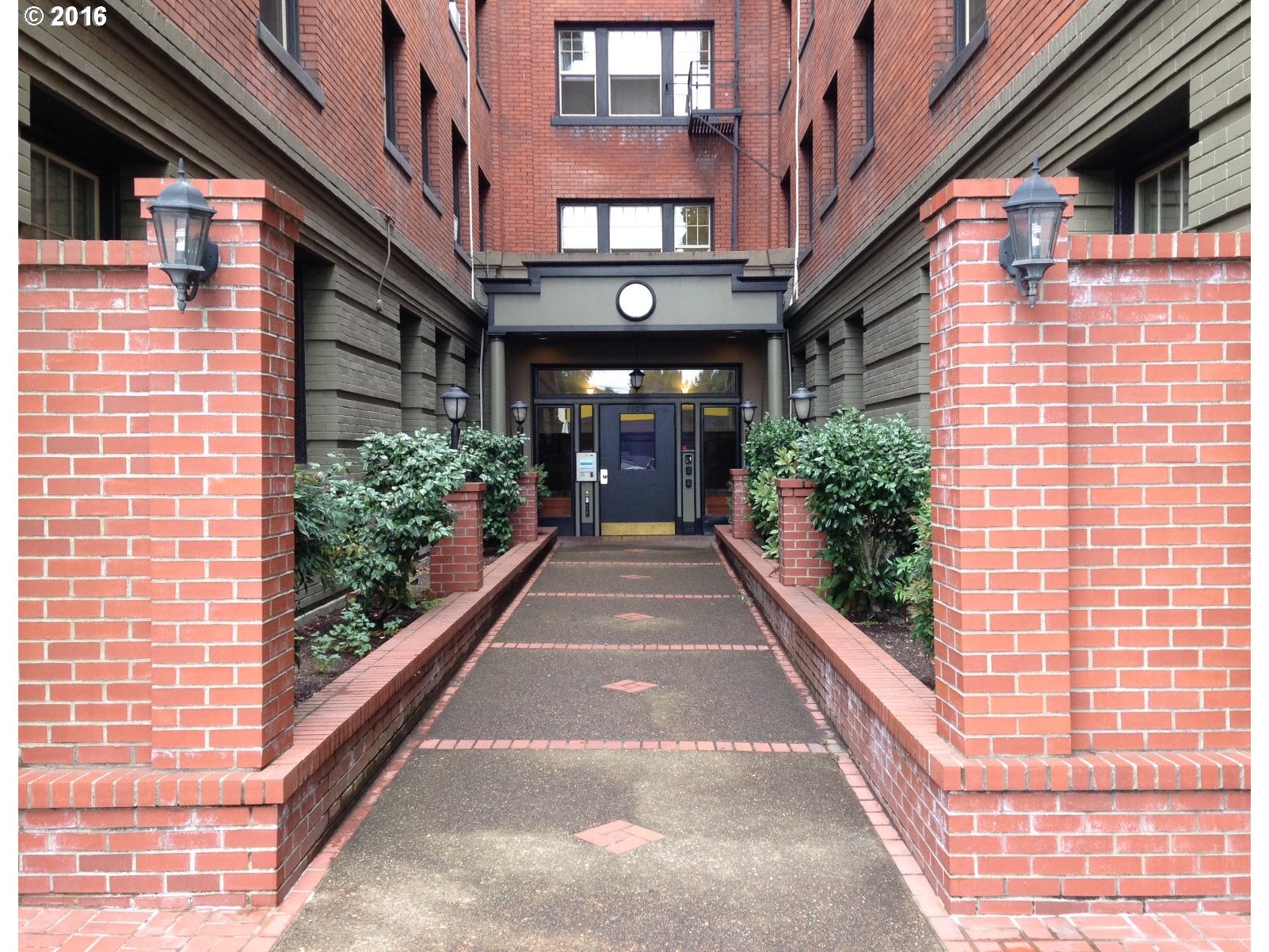Guide to the Northwest District Neighborhood in Portland, Oregon
Also Known as Nob Hill
The Northwest District is a densely populated retail and residential neighborhood in the Northwest section of Portland with an area of 976 acres and a population of 13,790 (2010 Census). The district stretches west to east from the base of the West Hills (Tualatin Mountains) to I-405 (between NW 15th and 16th avenues), and north to south from NW Nicolai Street and the Willamette River to West Burnside Street. It borders the neighborhoods of Forest Park and Hillside on the west, Northwest Industrial on the north, the Pearl District on the east, and Goose Hollow on the south.
View a map of the Northwest District.
Some of the locals call it “Trendy-third Avenue.” But most Portlanders simply call the area “Northwest.” Another name commonly used for the area is Nob Hill after the San Francisco area. Portland trendiest shopping is within ten blocks of Northwest 23rd Avenue between Burnside and NW Northrup streets. Portland‘s “23rd” is the place to go if you want to walk, people-watch and browse through shops.
NW 21st Avenue is edgier. Wooden utility poles there have held so many concert posters that the rusty staples may be all that hold them up.
This is the neighborhood Bill Walton lived when he played for the Blazers in the 70s. He was the star when the Blazers won the NBA championship in 1976-77. Bill was (and still is) a popular guy in Portland.
The Northwest Examiner reported (June 2010 issue) that in the spring of 2010, famed urban planner/architect Andres Duany visited Portland in May and fell in love with Northwest 21st Avenue. He called it the “glory of Portland” and the 21st and Johnson crossing, in particular, the “quintessential Portland intersection.” Duany, a leader in the international New Urbanism movement, was in town for several speaking engagements, and his comments on 21st Avenue were part of a lecture at Metro headquarters. Duany praised the blending of “great old commercial buildings” and multi-story apartment structures on the Avenue, resulting in a self-sustaining level of density, manageable parking demands, affordable retail rents and a compatible mixture of uses. It’s worth visiting the intersection (NW 21st and NW Johnson) to view the type of buildings.
The citizens of Portland love their pets (Portland rank first in the country with 5.8 dog parks per 100,000 residents) and Dove Lewis Emergency Animal Hospital is an important part of the Nob Hill neighborhood. Dove Lewis specializes in the emergency and critical care of pets. According to their website, they are open “24 hours a day, 365 days a year to provide proficient, compassionate care.”
History of Nob Hill
The area’s history begins in the 1840s when Captain John H. Couch (pronounced Coo-ch) decided that Portland should be Oregon’s largest city instead of Oregon City, which was the main settlement at the time. A sailor, he came to believe that Oregon City, further downstream, presented too many navigation problems. So the Captain in 1845 speculated on a land claim in what is now part of the Pearl and Northwest District. Couch made his fortune sailing ships with supplies between Portland and San Francisco during the gold rush era as the miners were on a spending spree. Three of his daughters built homes along NW 19th Avenue and that became the core of Nob Hill. Couch subdivided his land and investors build luxury rental apartments as well as large homes.
When Portland’s grown exploded following the 1905 Lewis and Clark Exposition, the neighborhood began to add more multifamily housing units. During WWII, with thousands working in the Kaiser shipyards, Nob Hill was densely occupied as many homes were divided into rental units. After the war, residents took to their new automobiles and fled to the suburbs. The area became depressed until the city underwent a revival in the 70s thanks in large part to higher gas prices as the suburbs began to lose their appeal. The area became attractive to investors, preservationists, and young people. Many of the vacant commercial buildings along NW 21st and 23rd began to attract businesses and now these buildings are occupied by restaurants, national chains, and boutiques. You know the area is thriving when it takes ten minutes to find a parking spot.
Slabtown
 This area of the Northwest District — historically known as Slabtown, more recently dubbed NoLo (north of Lovejoy) by real estate agents — is an area of approximately 50 square blocks. In the 1880s working-class residents in part of Northwest Portland used slabs of cheap wood from sawmills as fuel for their fireplaces. Slabtown became a semi-derogatory term for the area by the rich, who could afford cordwood that was cut to size. Slabtown was a bustling working-class enclave whose residents included immigrants from Scandinavia, China, and Eastern Europe. They toiled at the nearby lumber mills, icehouses, docks and on the streetcars.
This area of the Northwest District — historically known as Slabtown, more recently dubbed NoLo (north of Lovejoy) by real estate agents — is an area of approximately 50 square blocks. In the 1880s working-class residents in part of Northwest Portland used slabs of cheap wood from sawmills as fuel for their fireplaces. Slabtown became a semi-derogatory term for the area by the rich, who could afford cordwood that was cut to size. Slabtown was a bustling working-class enclave whose residents included immigrants from Scandinavia, China, and Eastern Europe. They toiled at the nearby lumber mills, icehouses, docks and on the streetcars.
Another iconic Slabtown attraction was the Vaughn Street Ballpark, which stood at Northwest Thurman and 24th Avenue from 1900 to 1956. Several neighborhood kids went on to become pro and semi-pro baseball players. McMenamin’s Tavern & Pool at Northwest 23rd and Thurman Street, which houses a treasure trove of neighborhood history, displays several photographs of those locals who went on to baseball glory. A Boston Red Sox Hall of Famer, Johnny Pesky, started life in Slabtown as Johnny Peskovich. The ballpark was torn down in 1956 when Portland’s Beavers baseball team moved to what is now Providence Park in Southwest Portland.
St. Patrick’s Church, 1623 NW 19th Avenue, was in the middle of the poor neighborhood, while the wealthy lived closer to West Burnside Street, around 15th and 16th Avenues. So says Richard Engeman, staff historian at the Oregon Historical Society. Today, the prominent ‘Slabtown’ sign at the corner of Northwest Lovejoy Street and 15th Avenue, a relic from the 1970s, is one of the only reminders of the term. The sign was the inspiration for the bar and music lounge of the same name, Slabtown, located at 1033 NW 16th Avenue and is famously known as the birthplace of the Portland band the Dandy Warhols.
Incursions from Interstate 405 and the anchors of the Fremont Bridge have reduced the neighborhood’s footprint. It currently runs from Northwest Sixteenth Avenue up to Montgomery Park, which looked very different in 1900. It was the site of a large lake — Guild’s Lake —surrounded by Chinese immigrant’s farms. The neighborhood’s north/south borders are Northwest Pettygrove Street and the Willamette River. Long before Guild’s Lake was drained, and before the era of wartime housing, this area of Slabtown was the site of the 1905 Lewis and Clark World’s Fair. The fair attracted 1.6 million visitors between June and October 1905 and as many as 150 streetcars a day deposited fairgoers at the main entrance at Northwest 26th Avenue and Upshur Street.
Slabtown is labeled the “transition area” in city documents. It is changing, adding dozens of town houses and condominiums. Town houses and condos are replacing old industrial plants. A 25 unit townhouse development opened in 2006 on NW 20th Avenue and Pettygrove Street, with units priced around $500,000. The historic Lane-Miles Standish building, for 85 years home to a printing business at NW 19th Avenue and Raleigh Street, has been converted to a mix of office space and five levels of residences.
Origin of the Names Northwest and Nob Hill
“Northwest” came about because of common usage whereas “Nob Hill” most likely was adapted from “Nob Hill” in San Francisco. The San Francisco Chronicle defines Nob Hill and Russian Hill area as within Bay Street, Van Ness Avenue, Taylor Street, and Pine Street.
Schools in the Nob Hill Neighborhood
Find your school attendance area or a school site and view the boundary area using School Locator. Read how to use the interactive map by clicking on the “Information” icon (circle with an “i” in the center).
- Schools in the Neighborhood A list of public and private schools in the Northwest District neighborhood.
- Public Schools in the Neighborhood Elementary school: Chapman. Middle school: East-West Sylvan. High school: Lincoln High School. K-12: Metropolitan Learning Center.
- School Report Cards Report Cards for schools and districts in Oregon. Select “Portland SD 1J” to view individual schools within the Portland Public School District.
Alphabet Historic District
 Hats off to Douglas Taylor, superintendent of streets when Portland, East Portland, and Albina consolidated in 1891. Because of the street name duplication between the three areas, Mayor W.S. Mason referred the matter to the City Council “Streets Committee” which passed the problem off to Superintendent Taylor. Taylor and his staff recommended to the “Streets Committee” a street naming pattern in the Couch subdivision (Northwest District and Pearl District) that is easy to remember; numbers in one direction and letters in alphabetical sequence in the other. Thus we have gone from south to north: Burnside (the street that divides southwest from the northwest as well as northeast from southeast), Couch, Davis, Everett, Flanders, Glisan, Hoyt, Irving, Johnson, and so forth. Some of the street names (Couch to Irving) continue across the river into Northeast Portland. The numbers are also in the sequence of course. Taylor must have been a pretty good politician − he gave the “Streets Committee” a list of alternative names for most streets and he let them pick and choose.
Hats off to Douglas Taylor, superintendent of streets when Portland, East Portland, and Albina consolidated in 1891. Because of the street name duplication between the three areas, Mayor W.S. Mason referred the matter to the City Council “Streets Committee” which passed the problem off to Superintendent Taylor. Taylor and his staff recommended to the “Streets Committee” a street naming pattern in the Couch subdivision (Northwest District and Pearl District) that is easy to remember; numbers in one direction and letters in alphabetical sequence in the other. Thus we have gone from south to north: Burnside (the street that divides southwest from the northwest as well as northeast from southeast), Couch, Davis, Everett, Flanders, Glisan, Hoyt, Irving, Johnson, and so forth. Some of the street names (Couch to Irving) continue across the river into Northeast Portland. The numbers are also in the sequence of course. Taylor must have been a pretty good politician − he gave the “Streets Committee” a list of alternative names for most streets and he let them pick and choose.
The “Alphabet Street” is a Historic District and listed on the National Register of Historic Places. The area is roughly bounded by NW Lovejoy Street, NW Marshall Street, NW 17th Avenue, W. Burnside Street, and NW 24th Avenue.
Nob Hill Home Styles
You will find a variety of housing in Northwest. Everything from classic brick apartment houses, new condos, apartments that have been converted to condos, new townhomes, plexes, and detached single family homes. Prices range from the low 100s to well over a million. There is something for practically everyone’s billfold. You will find apartments on every block with over 75-80 percent of the residents residing in an apartment. This area is changing rapidly as developers buy a couple of older homes, remove them, and build 6-8 new townhomes. Or they buy a run-down commercial building, demolish it, and erect a new condominium in its place.
The 1,569 acre Alphabet Historic District (also known as Portland West End Historic District) is roughly bounded by NW Lovejoy Street, NW Marshall Street, NW 17th Avenue, W. Burnside Street, and NW 24th Avenue. The National Register of Historic Places has identified 478 buildings in the Alphabet Historic District. Homes styles include Bungalow/Craftsman and Queen Anne.
Portland Monthly Magazine Guide to Neighborhoods
 In their April issue every year, the Portland Monthly Magazine features the past year home prices along with other information about Portland neighborhoods and suburban communities. To read the magazine’s latest stories and numbers visit the Real Estate section.
In their April issue every year, the Portland Monthly Magazine features the past year home prices along with other information about Portland neighborhoods and suburban communities. To read the magazine’s latest stories and numbers visit the Real Estate section.
The numbers on the website and printed magazine are divided into four sections (real estate, people, crime, and lifestyle) on each of the Portland 90 plus neighborhoods as well as about 25 suburban communities. The website offers over 50 items of information about each Portland neighborhood and suburban community.
The magazine added a feature on their website for homes sold in 2014 and it’s also available for homes sold in 2015 — an interactive map where you can click on a neighborhood and a pop-up displays five items (1-year median price change, 5-year median price change, median gross rent, walkability score and percent of newcomer) for a Portland neighborhood as well as a suburban community. Note the detailed numbers for each of the four sections for homes sold in 2015 are displayed below the map.
To visit the magazine’s website latest stories and numbers visit their Real Estate section — click on “Neighborhoods” to view the numbers for the Portland neighborhoods and click on “Suburbs” for the numbers on communities in the metro area. Note the detailed numbers for each of the four sections for homes sold in 2014 and 2015 are displayed below the map. To access the Portland neighborhoods and metro communities demographic data and home prices by year:
- 2013 Demographics and Home Prices
- 2014 Demographics and Home Prices
- 2015 Demographics and Home Prices
Northwest District Demographics Below are some facts about the Northwest District neighborhood gleaned from the magazine’s website. A few numbers can tell much about the character of a neighborhood.
- Average year homes built in the neighborhood: 1949
- Percent of residents below poverty level: 16.6%
- Percent of neighborhood size with parks: 2%
- Live within a 1/2 mile of a park: 97%
- Commute by bike or walking: 22.6%
1Northwest District Home Prices: 2007 – 2015
- Number of Homes Sold in Northwest District—► 228 homes were sold in 2015 and 75% of the sales were condos— 2% were distress property sales. 225 homes were sold in 2014 and 69% of the sales were condos— 3% were distress property sales. 208 homes were sold in 2014 and 6% were distressed sales. 155 homes were sold in 2012 and 17% were distressed sales. 156 homes were sold in 2011 and 13% were distressed sales. 146 homes were sold in 2010 and over 100 of these were condos and townhomes — distressed properties sales were 16%.
- Median Price for Homes Sold in Northwest District—► $400,000 in 2015, $405,000 in 2014, $355,000 in 2014, $390,000 in 2012, $339,000 in 2011, $340,000 in 2010, $317,500 in 2009, $325,000 in 2008, and $289,950 in 2007.
- Average Cost per Square Foot—► $333 in 2015, $309 in 2014.
- 1-Year Median Sales Price Change in Northwest District—► 2015 the change was -1.2%. 2014 the change was 14%. 2013 the change was -9%. 2012 the price change was 15%. 2011 the price change was 9%. 2010 the price change was -5%.
- 5-Year Median Sales Price Change in Northwest District—► 2011 to 2015 the median sales price change was 17%. 2010 to 2014 the median sales price change was 25%. 2009 to 2013 the price change was 9%. 2008 to 2012 the price change was 20%. 2007 to 2011 the price change was 9%. 2006 to 2010 the price change was -6%.
- Portland Metro Area Median Home Price—► $308,000 in 2015,$285,500 in 2014, $265,000 in 2014, $235,000 in 2012, $221,000 in 2011, $239,900 in 2010, $247,000 in 2009, $278,000 in 2008, and $290,000 in 2007.
- Portland Metro Area Average Home Prices—► $354,500 in 2015, $333,000 in 2014, $310,600 in 2013, $275,000 in 2012, $263,300 in 2011, $282,100 in 2010, $289,900 in 2009, $330,300 in 2008, and $342,000 in 2007.
Please be aware that the above figures are subject to error and are intended as guidelines only.
Find a Home in the Northwest District
- Homes for Sale in the Northwest District Neighborhood — View on all devices except Apple® mobile devices. To view homes for sale in the Northwest District on Apple® mobile devices key in “Northwest District” in the “Location” field and click on the “Search Now” icon.
- Displays Homes for Sale in the Northwest District Neighborhood — View on all devices. Photos of home displayed along with detail description of the property on each listing.
- Search for Homes — Search on all devices. Map-based on devices configured with Adobe Flash and Javascript and text-based on any device.
Homes for Sale in the Northwest District
Parks and Community Centers in the Neighborhood
Northwest District residents have two parks within their borders and easy access to the 5,000 plus acre Forest Park.
- Wallace Park (5.39 acres) is located at NW 25th Avenue and NW Raleigh Street adjacent to the Chapman Elementary School. Facilities include a basketball court, dog off-leash area, horseshoe pit, picnic site, playground, soccer field, softball field, tennis court, and restrooms.
- Couch Park (2.39 acres) at NW 19th Avenue and NW Glisan Street includes an outdoor basketball court, restroom, dog off-leash area, and playground.
The Friendly House is located at NW 26th Avenue and NW Savier and it is truly a community asset. Founded in 1930, the “neighbor helping neighbor” philosophy is at the heart of Friendly House and its programs. It has programs for children, adults, and seniors. Although small in size, it does have a room full of exercise equipment along with a gym that is constantly used.
The Northwest District has 15 acres of parkland and open spaces according to Metro and the Portland Department of Parks and Recreation.
Northwest 21st & 23rd Shopping and Dining
 A popular commercial area exists on Northwest 23rd Street (and to a lesser extend on 21st Street) running 10-12 blocks. Some of the Portland’s best dining spots are located along these two streets. 23rd is a browsers paradise with numerous shops ranging from clothing boutiques to book stores. West Burnside is solid businesses from auto dealerships (Volvo and Jag) to mini-malls.
A popular commercial area exists on Northwest 23rd Street (and to a lesser extend on 21st Street) running 10-12 blocks. Some of the Portland’s best dining spots are located along these two streets. 23rd is a browsers paradise with numerous shops ranging from clothing boutiques to book stores. West Burnside is solid businesses from auto dealerships (Volvo and Jag) to mini-malls.
Portland’s streetcar line connects the Northwest District with downtown and South Waterfront. Its route is circulator − a transit service that moves people through the Central City.
Northwest is an Entertainment Center! This is where the “characters” hang out because they come to the Fred Meyer Stadium branch supermarket (the locals called it Freddy’s) and unload their soda cans and bottles (Oregon Bottle Bill) and collect their money. Some then shop at Freddy’s. I once asked a check-out person at the stadium branch if she ever got bored working at Freddy’s. “Yes,” she replied, “when I worked at a Fred Meyer store in the suburbs.”
PlayDate PDX created a 7,500 square foot indoor play place at 1434 NW 17th Avenue that is tailored to create a safe and energetic environment that stimulates the imagination and gives your children space to roam at the same time giving parents a comfortable and soothing environment to relax and enjoy a warm cup of Stumptown coffee. With help from their landlord and International Play Co., which designs and builds play structures, two ER doctors transformed a light-industrial space on the border of the Pearl and Northwest districts. Now the building is a Land of Make Believe-themed playground, with passageways and slides snaking through a pretend castle. On one side, kids and an adult or two engage in a squishy-ball shootout on the air-cannon range. In another corner, a light-up dance floor flashes. The play area covers a third of the 7,500-square-foot floor space, not counting its second and third levels. Filling much of the rest are a central seating area and several party rooms for rent.
Travel Portland magazine, named the nation’s best visitors guide by the U.S. Travel Association, is an annual publication highlighting the best things to see and do in Portland, Oregon. You can download the magazine by clicking here.
Vaux Swifts at Chapman School
 In early September you can sit on the lawn at Chapman School and watch the spectacular aerial display of thousands of Vaux’s Swifts as they gather and spiral into the school’s chimney to roost. The swifts begin gathering in the sky above the Chapman School neighborhood in large numbers 40 to 60 minutes before sunset. Closer to sunset the swifts begin circling directly above the school chimney in a large flock − this is a dramatic sight, and you will be there before it begins. They begin to enter the chimney within 10 to 30 minutes after sunset. Portland Audubon volunteers are always on hand nightly to answer questions and offer views through spotting scopes.
In early September you can sit on the lawn at Chapman School and watch the spectacular aerial display of thousands of Vaux’s Swifts as they gather and spiral into the school’s chimney to roost. The swifts begin gathering in the sky above the Chapman School neighborhood in large numbers 40 to 60 minutes before sunset. Closer to sunset the swifts begin circling directly above the school chimney in a large flock − this is a dramatic sight, and you will be there before it begins. They begin to enter the chimney within 10 to 30 minutes after sunset. Portland Audubon volunteers are always on hand nightly to answer questions and offer views through spotting scopes.
Video Tour of Nob Hill
Walking in the Northwest District
Here are some walking tours in the downtown area of Portland:
- Public Art Walking Tour The Regional Arts & Culture Council (RACC) along with the Portland Oregon Visitors Association have a Public Art Walking Tour map/brochure – a colorful guide to nearly 100 public art pieces in downtown Portland and the near eastside. This free brochure is available at Portland-area visitor centers, or by calling RACC at (503) 823-5111. You can also download a copy by clicking here.
- Walking Tour to Pittock Mansion This 2.8-mile walk begins in Northwest Portland and climbs some of the city’s longest staircases through Westover Heights. It ends at the Pittock Mansion, a restored French Renaissance Revival Chateau. The home, its grounds, and fabulous views are open to the public. Click here to download the guide.
- Walking Tour Nob Hill and the Pearl District This 3.3-mile walk begins at PGE Park it takes you through historic neighborhoods to shops, galleries, restaurants, and theaters in the Pearl District and Nob Hill. Click here to download the guide.
- The NW23rd/Pearl District Gallery & Walking Map The combined Northwest District (aka Alphabet District, Nob Hill, or NW23rd) and Pearl Gallery map provides key information for Portland First Thursday gallery walkers. Galleries, public art, restaurants, coffeehouses, pubs & bakeries are clearly labeled on the map and in the index. Parking, mass transit, and key landmarks are shown. If your time is limited, you can see at a glance what blocks have the greatest density of galleries, bakeries, or restaurants. Click here to download the map.
Walk Score helps you find a walkable place to live. Walk Score is a number between 0 and 100 that measures the walkability of any address. Portland is the 14th most walkable city in the U.S. with a Walk Score of 63, a Transit Score of 50 and a Bike Score of 72. There are over 3,000 restaurants and coffee shops in Portland. People in Portland can walk to an average of five restaurants, bars and coffee shops in five minutes.
The Walk Score for the Northwest District neighborhood is 92, the Transit Score is 64, and the Bike Score is 89.
Northwest District
Walker’s Paradise
Walk Score®
92
out of 100
Northwest District is the 5th most walkable neighborhood in Portland.
More About the Northwest District
To learn more about the Nob Hill neighborhood visit Portland Maps. It will provide you with a list of businesses, demographic data, crime stats, parks, schools, aerial photos, maps, elevation, and more for the Northwest District neighborhood. All you need is a property address — use “2000 NW Flanders Street” or an address of your choice
- Neighborhood Association Website Northwest District Neighborhood Association. The hostel in the neighborhood has a blog.
- Neighborhood News The Northwest Examiner is a free monthly publication that covers the community. You can download the current issue as well as past issues The Neighborhood Activist is a two to three-page monthly print newsletter produced by Neighbors West-Northwest and you can download the latest issue.
- WiFi Locations Discover the best coffee shops, cafes, bars, coworking and alternative spaces to get work done in the Portland area. Explore popular categories like real-time density, reliable wifi, has power, and more.
- Location West of downtown. When you cross I-405, you are in the Northwest District. The streets are all “NW . . .” and if they say “SW . . .”, you are in the Goose Hollow neighborhood.
- Northwest District Boundaries West Burnside Street on the South side and the I-405 freeway to the East. North: Northwest District extends to NW Front Avenue, NW Nicolai Street and St. Helens Road. West: Defined by the east boundaries of Forest and Macleay Parks, and a line running 600 feet west and parallel to Cornell and Westover Roads.
- Map of Boundaries Northwest District
- 2Drive Time to Downtown Four minutes.
- Topography Mature trees in yards and parks. Hilly with winding roads along on the west border of the neighborhood bordering Forest Park.
- Sidewalks and Streets There are many cars in this neighborhood, so streets are full of cars, especially east of NW 25th. Sidewalks everywhere in the neighborhood and wide enough for two people to walk together.
- Public Transportation TriMet has seven bus routes in the Northwest District. The streetcar line travels to the neighborhood from the Pearl District via NW Northrup Street, goes a couple of blocks up NW 23rd Avenue and heads back east on NW Lovejoy Street. Ride downtown to Portland State University or on to the South Waterfront or cross the river and visit OMSI. Transit Score provides a 0-100 rating indicating how well an address is served by public transportation. Ratings range from “Rider’s Paradises” to areas with limited or no nearby public transportation.
- Commuting 15.1% of the neighborhood residents commute by public transportation, 5.8% by biking and 16.8% walk.
- 3Census 2010 Demographics Population: 13,390. Area size: 976 acres. Average population density: 13 persons per acre. Number of households: 9,420. Average size of household: 1.42 persons. Median household income: $52,100. Percent of homeowners: 24%. Percent of renters: 76%. Diversity: 12.6% non-Caucasian. More census data about the Northwest District at Portland Online and City Data.
- 4Crime Stats There were 1,224 property crimes (assault, arson, burglary, larceny, robbery, theft from auto, vehicle theft) in 2014. There were 49 violent crimes (aggravated assault, homicide, robbery, rape) committed in 2014. There were 89 crimes per 1,000 residents in 2014. For the latest crime statistics and historical data for the Northwest District neighborhood, visit the Portland Police Bureau website.
- Sex Offenders Click here for the State of Oregon Sex Offender Inquiry System. After agreeing to the “Conditions of Use Statement,” you will be redirected to an “Enter Search Criteria” page. Insert a zip code in the “Zip” field and click on the “Query” button. Northwest District zip code(s): 97209, 97210.
- 5Shopping and Services Number of supermarkets/food stores: 4. Number of health clubs: 3. Number of coffee shops: 16. The Northwest District has a large supermarket (Fred Meyer) along with numerous specialty shops. Besides the large food markets such as Zupans and Fred Meyer, Northwest residents have access to Trader Joe’s on NW Glisan Street, City Market on NW 21st Avenue, Food Front Coop on NW Thurman and 24th, and New Seasons Market at 2170 NW Raleigh. The neighborhood also has a couple of bakeries along with a meat market.
- Farmers Markets The Northwest District/Nob Hill market is between NW 19th Avenue and Everett Street, 3 pm-7 pm Thursdays, June-September. The Wednesday market is held between SW Salmon and Main streets from 10 am-2 pm Wednesdays, May-October. The Saturday market is held at the South Park Blocks by Portland State University between SW Park and Montgomery streets from 8:30 am-2 pm Saturdays, March-October. Also from 9 am – 2 pm November-December. The Pioneer Square (SW Broadway & SW Morrison) market is held 10:00 am-2:00 pm on Mondays from June-September. More information at Portland Farmers Market.
- Eating Out Restaurants cover the complete range from “Gourmet Magazine Top 100” to shops serving a slice of pizza. These make everyone’s list of best restaurants in the Northwest District: Balvo, Bewon, Cafe Mino, Carlyle, Ken’s Artisan Bakery, and Paley’s Place. Urban Spoon rates over 100 restaurants, coffee places, and sandwich shops in the neighborhood.
- Public Library A branch of the Multnomah County Library system is located at 2300 NW Thurman Street.
- Who Lives in the Northwest District Young singles who want to be close to the action. People of all ages live in the Northwest, but children are not very evident in the neighborhood. The median age is 34.
- What They Drive in Nob Hill Hondas, Nissans, and Toyotas. A limited number of SUVs. Because of a large number of apartments and restaurants, parking is a problem no matter what kind of car you own.
- 6Biking The quality if high/fair. The Northwest District has 9.8 miles of bike lanes.
Map of the Nob Hill Neighborhood
__________________________________________________

